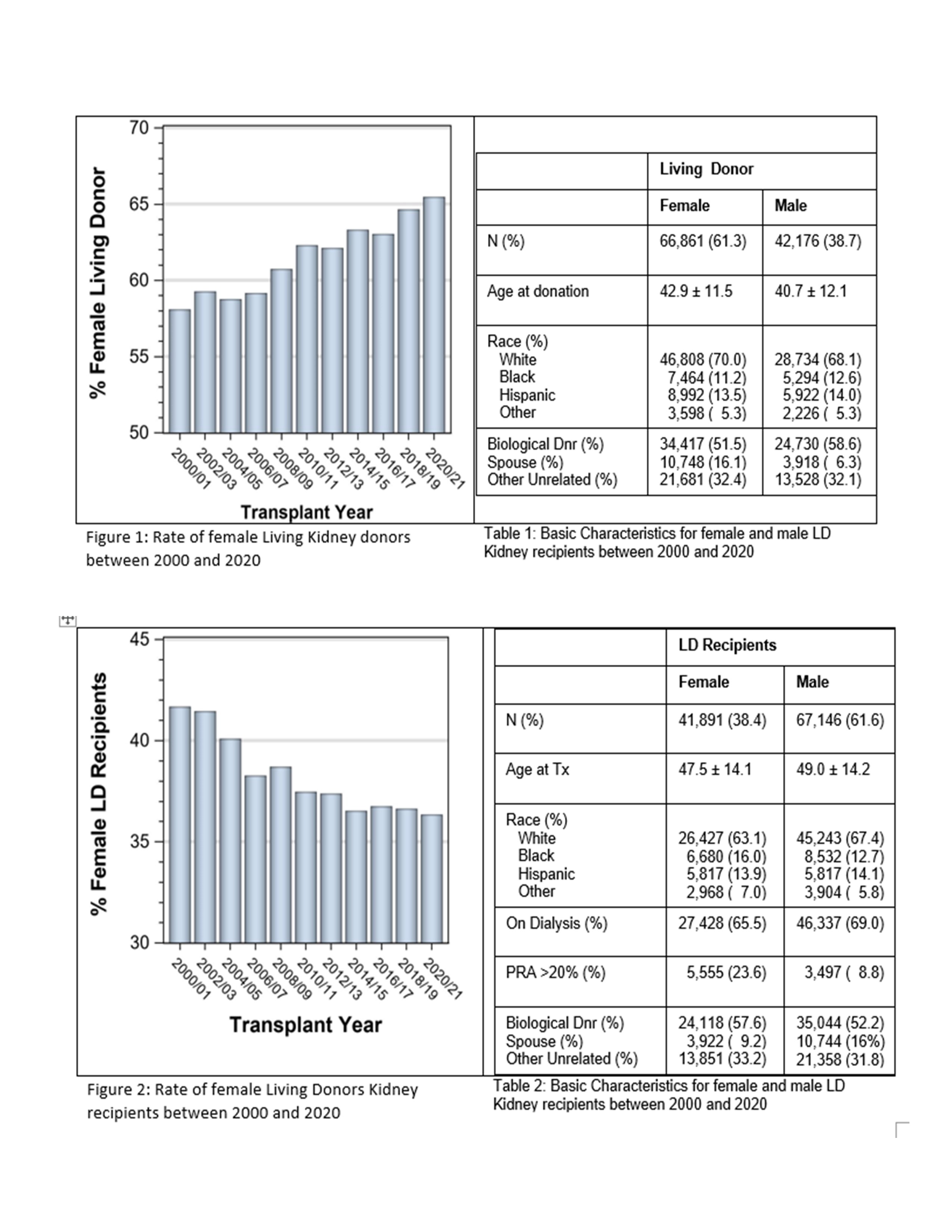Clear Gender Disparity in Living Donor Kidney Transplants
1Medicine, SUNY Downstate Medical Center, Brooklyn, NY, 2SUNY Downstate Medical University, Brooklyn, NY
Meeting: 2022 American Transplant Congress
Abstract number: 497
Keywords: Kidney transplantation, Living donor
Topic: Clinical Science » Kidney » 40 - Kidney Living Donor: Other
Session Information
Session Name: Kidney Living Donor & Paired Exchange
Session Type: Rapid Fire Oral Abstract
Date: Tuesday, June 7, 2022
Session Time: 5:30pm-7:00pm
 Presentation Time: 6:40pm-6:50pm
Presentation Time: 6:40pm-6:50pm
Location: Hynes Room 302
*Purpose: Over the last years, the number of kidney transplants from living donors (LD) increased. However, more male than female patients received a LD transplant while increasing more females donated a kidney.
*Methods: This study included all 109,038 primary adult living donor kidney transplants reported to UNOS/OPTN and performed between 2000 and 2021. To account for annual fluctuations, 2-year intervals were assessed. Comprehensive univariate and multivariate analyses were performed to describe changes and risk factors for female living donor kidneys transplants.
*Results: Figures 1 and 2 show the proportion of female donor and kidney recipients over time. Table 1 and 2 show the gender differences for donor and recipients. Women continued to donate more even during the COVID-19 years 2020/21. For female kidney recipients increased the relative disparity index constantly from 1.39 in 2000/01 to 1.75 in 2020/21. The likelihood for a woman to receive a LD kidney increased by not having diabetes as underlying disease, being Black , and having a high PRA level, and being not working; the likelihood decreased with increasing age and being on dialysis. almost 3 times more often donated female spouses a kidney.
*Conclusions: (1) the disparity of receiving a LDK has continued in favor of men; (2) the likelihood to receive a LDK kidney was higher for a black vs white woman; (3) the likelihood to receive a non-biological LDK (spouse) was significantly lower for women vs men; (4) while women are significantly more often sensitized, the likelihood to receive a LDK was higher for sensitized women vs men. Gender disparity in 2020/21 remains real in LDK transplantation.
To cite this abstract in AMA style:
Gruessner AC, Gruessner R. Clear Gender Disparity in Living Donor Kidney Transplants [abstract]. Am J Transplant. 2022; 22 (suppl 3). https://atcmeetingabstracts.com/abstract/clear-gender-disparity-in-living-donor-kidney-transplants/. Accessed December 10, 2025.« Back to 2022 American Transplant Congress

